Where to dig in?
Wondering about the best gardening boots for women? You’ll want to focus on top brands like Muck Boot Company and Bogs Footwear for the best combination of comfort and durability in women’s gardening boots. Look for essential features including cushioned arch support, moisture-wicking linings, and shock absorption for all-day comfort. Choose boots with high-grade rubber construction, reinforced toe areas, and sealed seams for long-lasting durability. Prioritize 100% waterproof materials with breathable membranes to keep feet dry. Continue exploring to discover specific models and pricing options.
Top-Rated Women’s Gardening Boot Brands and Models
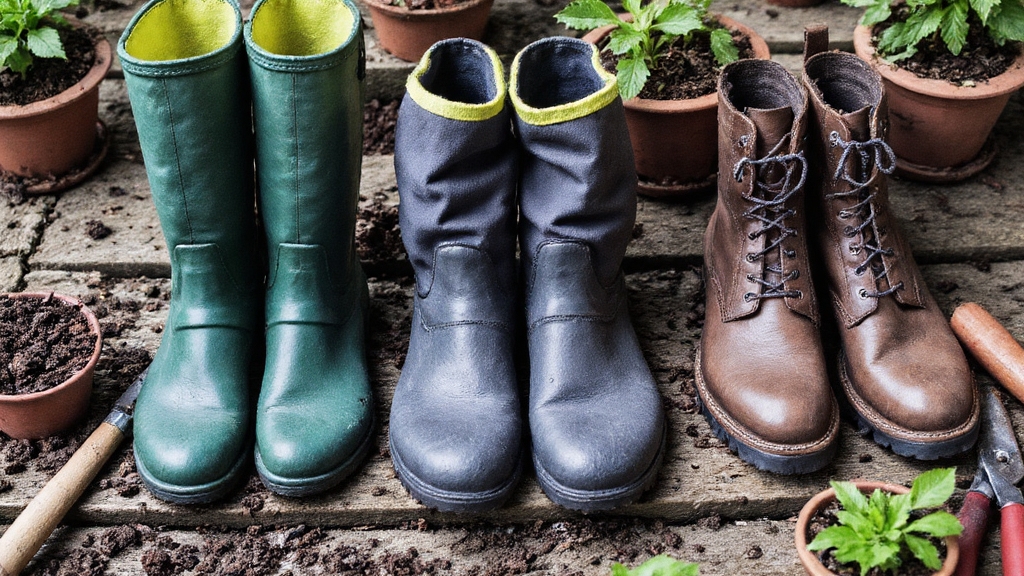
Four standout brands consistently earn top ratings from gardeners who demand reliable, comfortable footwear for their outdoor work. Muck Boot Company leads with lightweight, versatile designs that balance protection with flexibility, making them perfect for digging and flower bed maintenance.
Bogs Footwear offers 100% waterproof boots featuring BioGrip slip-resistant outsoles and Max-Wick technology that moves sweat away from your feet. Sloggers Women’s Waterproof Comfort Shoes receive high marks from gardening experts for exceptional moisture resistance and easy cleaning capabilities.
Hisea Women’s Gardening Boots provide sturdy construction at excellent value, especially their ankle boot models with removable insoles. Popular models like the Womens Muckster II Mid Boot feature muckproof technology that ensures complete protection from wet soil conditions. For year-round use, shoes like the Blundstone Chelsea Boot offer water-resistant materials and ergonomic designs to keep you comfortable regardless of the season. Each brand emphasizes waterproof technology, ergonomic design, and slip-resistant soles to keep you safe, dry, and comfortable during extended garden work sessions.
Essential Comfort Features for Extended Garden Work
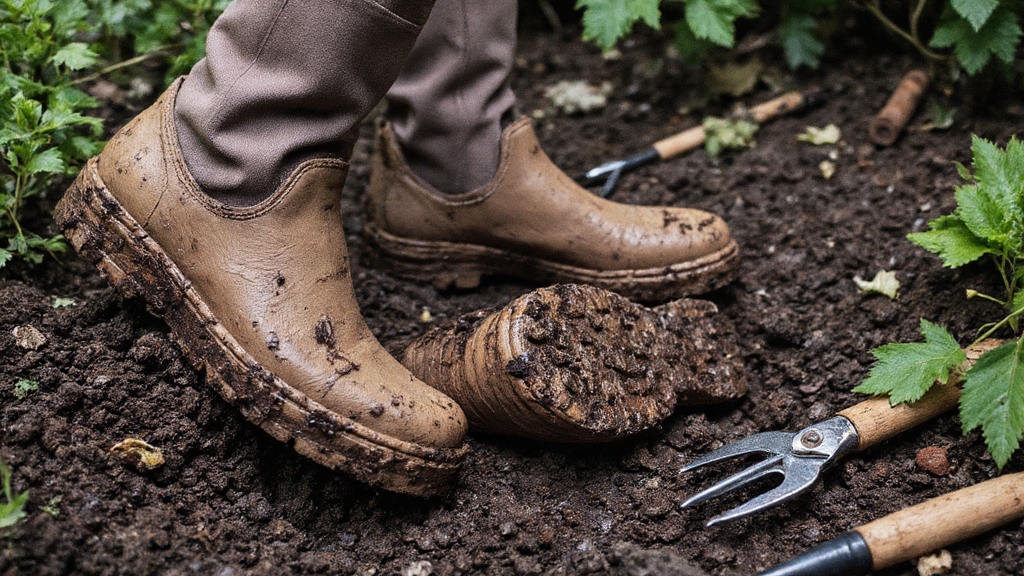
Several key comfort features make the difference between enjoying your garden work and counting the minutes until you can kick off your boots.
Cushioning and Support Systems
You’ll need thick insoles engineered for shock absorption, which reduce foot fatigue during long planting sessions. Deep foam or EVA footbeds cushion every step, lessening impact on your joints. Ergonomic arch support prevents foot pain during extended wear, while flexible soles accommodate natural movement. Many quality boots include free half sizer insoles that help achieve the perfect fit for maximum comfort.
Moisture Control Technology
Waterproof materials keep your feet dry, even in muddy conditions. Look for moisture-wicking technology that reduces sweat build-up, paired with breathable linings for temperature regulation. Many gardening boots are designed to include features similar to touchscreen fingertips found in top-rated gloves, offering high functionality without sacrificing comfort.
Proper Fit Features
Generous toe boxes accommodate natural foot swelling throughout the day. Adjustable collars, buckles, or laces provide secure ankle support, while roomy interiors allow space for thicker socks when needed.
Construction Quality and Long-Term Durability
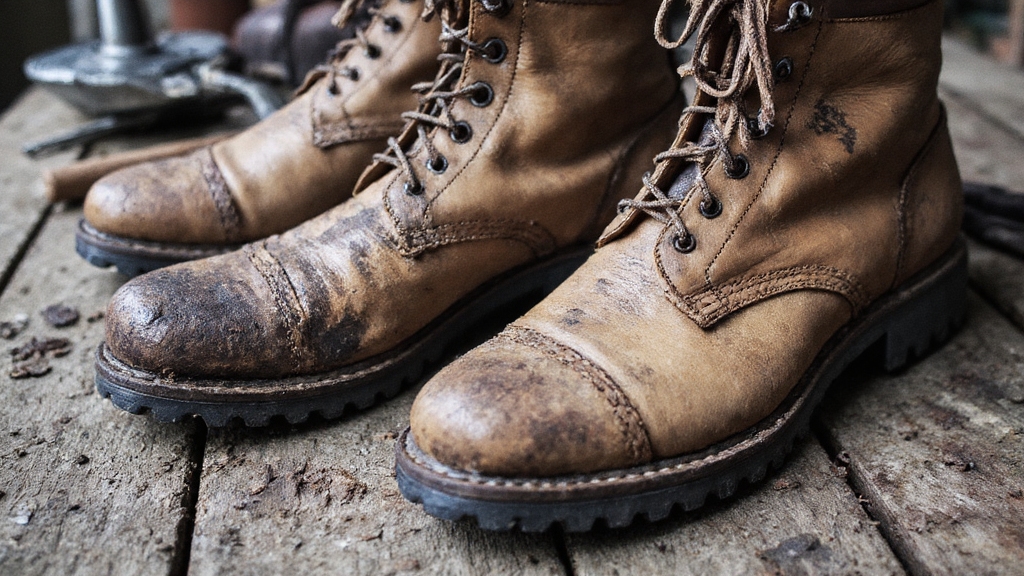
When you’re investing in gardening boots, the construction quality determines whether they’ll last one season or many years of heavy use. Look for high-grade natural rubber that resists cracking, even with constant wear. Quality boots feature EVA footbeds that maintain their cushioning over time, while neoprene linings safeguard internal components from moisture damage.
Pay attention to reinforced toe and heel areas, which prevent premature wear from tools and rocky soil. Deep tread patterns improve traction and reduce slipping that causes accelerated wear. Strong, sealed seams preclude water ingress and material separation during heavy garden work. Good gardening boots might also incorporate touch screen compatibility as a feature, akin to what is found in advanced gardening gloves.
The best boots combine thick, abrasion-resistant soles with flexible materials that won’t fatigue. Waterproof membranes and reinforced stitching in high-stress areas guarantee your investment protects your feet season after season. Poor quality insoles can detach and crumple over time, making the boots unwearable and forcing you to replace them prematurely.
Waterproof Performance and Weather Protection
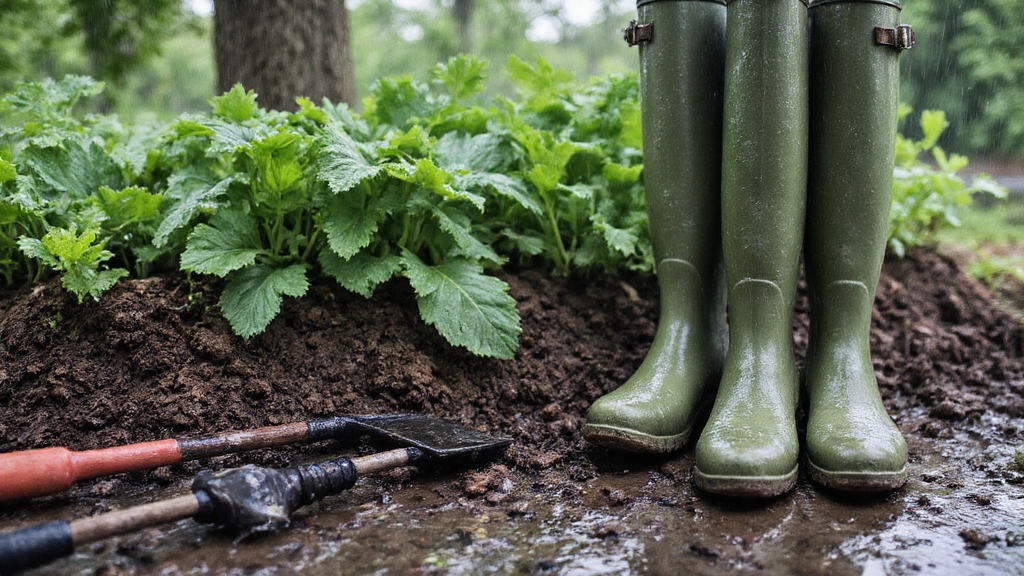
Since water protection determines whether your gardening sessions stay comfortable or turn miserable, you’ll want boots that completely seal out moisture while managing internal temperature. Look for 100% waterproof materials like rubber and neoprene, which create an impenetrable barrier against water. Quality boots feature sealed seams and waterproof membranes that prevent water ingress from every angle.
You’ll benefit from advanced features like breathable mesh linings that repel water while allowing moisture vapor to escape, keeping your feet dry from both external and internal moisture. These boots handle extreme temperatures from -40°F to 95°F, making them suitable for year-round gardening. It’s essential to consider options like the Hoka Ora Recovery Sliders for their versatility and comfort in warmer weather conditions.
Choose boots with thermal foam insulation for cold weather protection, and memory foam footbeds for warmth retention. Easy-clean surfaces let you hose off mud quickly without damaging the waterproof materials. Mid-calf designs provide the ideal balance of coverage and flexibility, protecting your lower legs from splashing water while allowing comfortable movement around garden beds and sturdy non-slip soles ensure stability on wet and muddy terrain.
Style Meets Function in Modern Garden Footwear
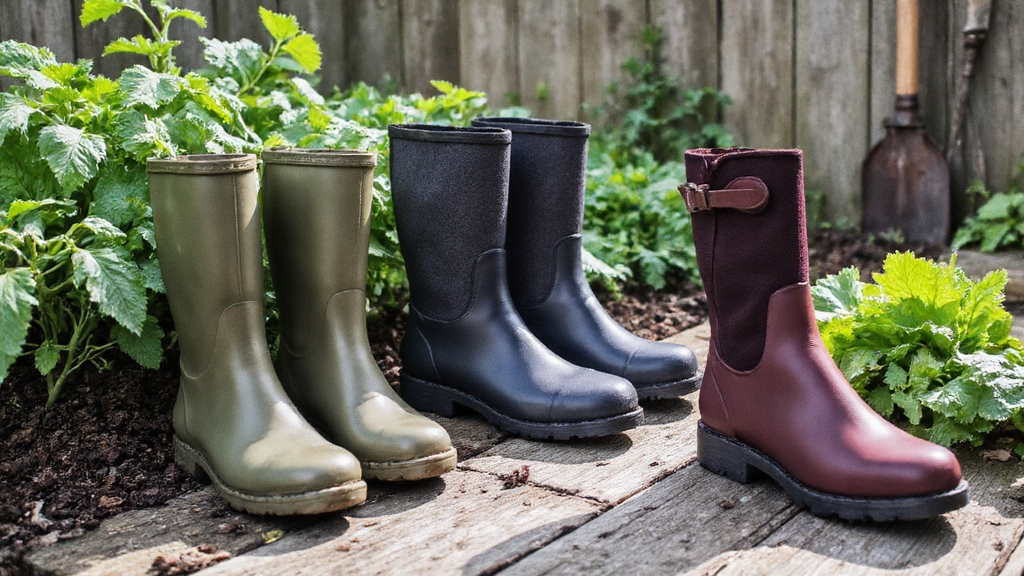
The evolution of women’s gardening boots represents a remarkable shift from purely functional footwear to stylish accessories that complement your outdoor wardrobe. You’ll find today’s designs feature sleek Chelsea boot styles and slip-on constructions that work perfectly for both garden tasks and casual outings.
Modern manufacturers prioritize lightweight materials, flexible rubber soles, and cushioned insoles that reduce foot fatigue during extended use. You can choose from expanded color palettes including classic black, earthy tones, and vibrant options that match your personal style. These boots also incorporate BioGrip slip resistant technology for superior traction on wet and muddy surfaces, akin to the effective traction provided by top pruning tools such as the Kent and Stowe Eversharp Bypass Secateurs.
These boots incorporate women-specific sizing with narrower fits, arch support, and moisture-wicking linings that keep your feet comfortable and dry. Pull tabs and streamlined silhouettes provide easy wear while maintaining sophisticated appearances that move seamlessly from garden to everyday activities.
Price Ranges and Best Value Options
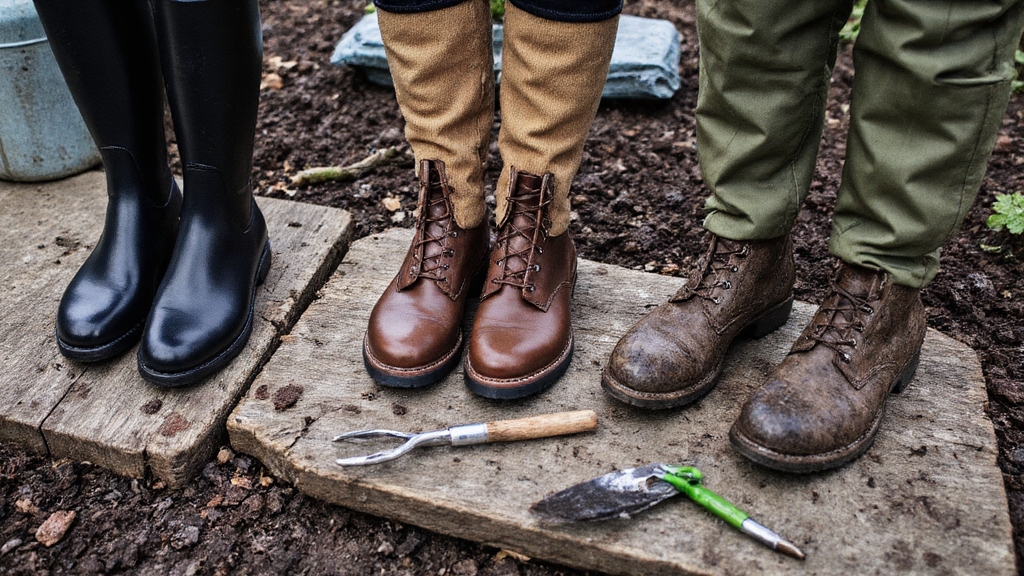
Shopping around for women’s gardening boots reveals a wide spectrum of pricing options, from budget-friendly basics under $30 to premium models exceeding $200. You’ll find the sweet spot for quality and value sits between $45 and $65, where comfort meets durability without breaking your budget.
The ideal balance of comfort and durability for women’s gardening boots falls in the $45-$65 price range.
Entry-Level Options ($20-$50)
Chelsea Rain Boots by A New Day™ offer solid protection at $25, while MUK LUKS Yellowstone Yardley Boots provide reliable waterproofing around $49. These work well for light gardening tasks.
Mid-Range Choices ($50-$100)
Flower Blade Boots by London Rag deliver enhanced construction and style for $45-$55 on clearance. You’ll get memory foam insoles, better traction, and improved ankle support. The Sloggers Rain & Garden Shoes stand out in this price range as a good value option under $50 with waterproof exterior and durable sole construction.
Premium Investment ($100+)
High-end brands like Muck Boot Company offer advanced waterproof technology and ultra-durable materials for serious gardeners. A premium hand fork like the DeWit Forged Hand Fork complements these boots perfectly for small garden tasks.
Frequently Asked Questions
How Do I Properly Clean and Maintain My Gardening Boots?
You’ll extend your gardening boots’ lifespan by following proper cleaning steps. First, rinse them with cold water to remove loose dirt, then scrub tougher stains using warm soapy water and a soft brush.
Next, hand-dry them with a towel, then air-dry in shade. For leather boots, apply conditioner after they’re completely dry. Store them upright in cool, dry places.
What Sock Types Work Best With Women’s Gardening Boots?
Choose merino wool or synthetic blend socks for ideal performance with your gardening boots. You’ll want midweight, cushioned socks that provide padding for long work sessions.
Select boot-length or mid-calf heights to prevent rubbing and dirt exposure. Look for moisture-wicking fabrics, reinforced heels and toes, plus seamless construction to avoid blisters. These features keep your feet dry, comfortable, and protected during garden work.
Can Gardening Boots Be Repaired if They Get Damaged?
You can definitely repair damaged gardening boots! Clean the area thoroughly, then sand around damage for better adhesion.
For small holes, apply rubber cement or specialized adhesives.
For larger tears, cut a matching patch slightly bigger than the hole, apply waterproof glue, and press firmly. Let cure 8-12 hours.
Consider sewing patches for extra strength on rubber boots.
How Do I Determine the Right Boot Size for Gardening?
Start by tracing your foot on paper while wearing gardening socks. Measure from your longest toe to heel, then round up when checking size charts. You’ll need at least a thumb’s width between your toe and boot tip.
Measure your foot’s widest part for proper width sizing. For tall boots, measure your calf circumference while sitting. Take measurements at day’s end when feet are slightly swollen.
Are Gardening Boots Safe to Wear Around Garden Chemicals and Fertilizers?
Yes, you’ll stay safe around garden chemicals when you choose boots with proper chemical resistance. Look for triple-dipped neoprene or PVC construction that resists fertilizers, pesticides, and acids. These materials won’t absorb or degrade from chemical exposure.
You’ll also want sealed designs that prevent splashes from entering your boots, plus slip-resistant soles for wet, contaminated surfaces.
Conclusion
You’ve now discovered the key factors that’ll help you choose gardening boots that work perfectly for your needs. Remember to prioritize waterproof materials, cushioned soles, and reinforced construction when you’re shopping. Don’t forget to contemplate your budget, preferred height, and specific garden conditions. With the right pair, you’ll enjoy comfortable, protected feet during every gardening session, making your outdoor work more enjoyable and productive for years to come.

